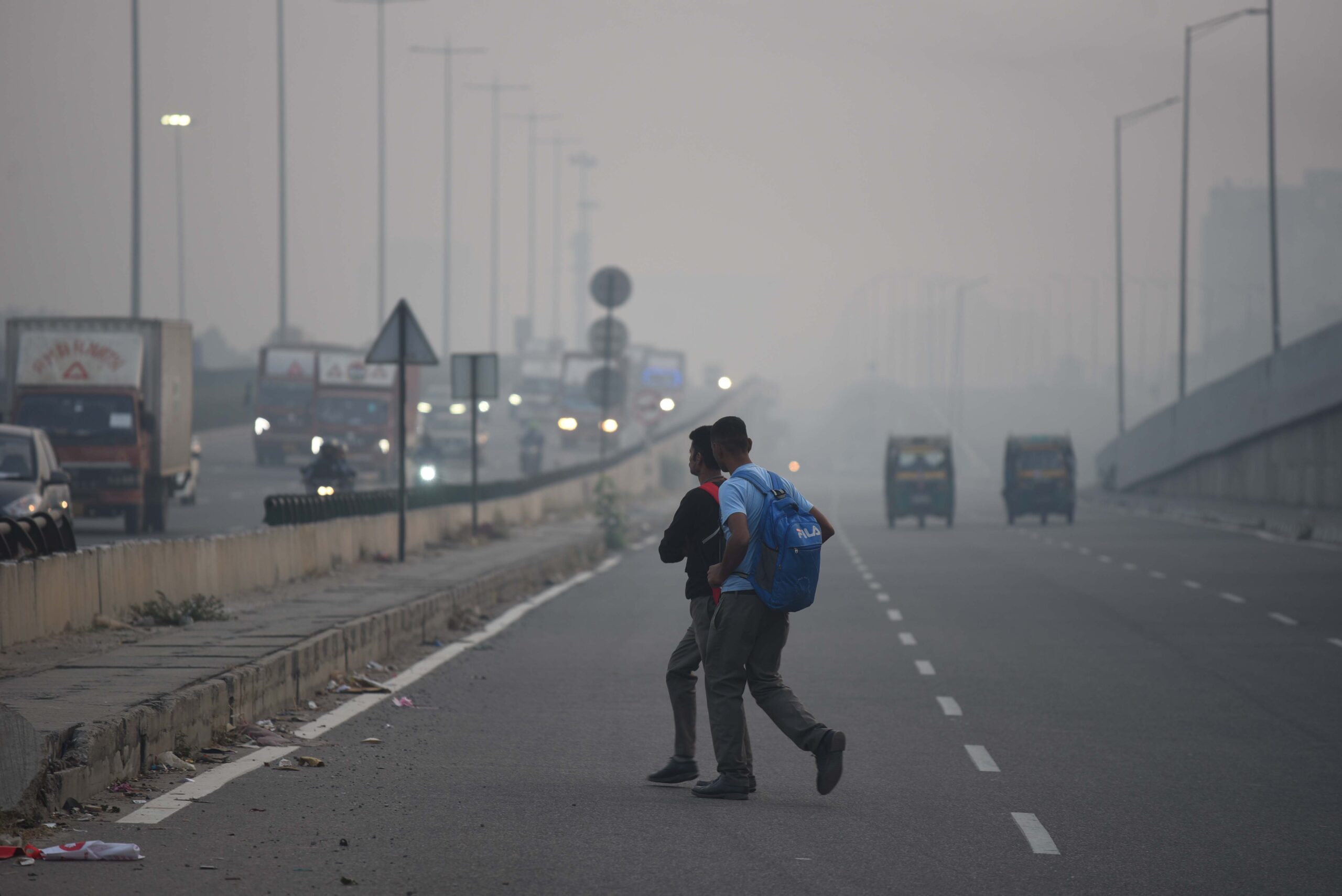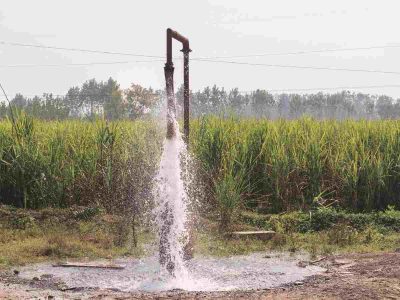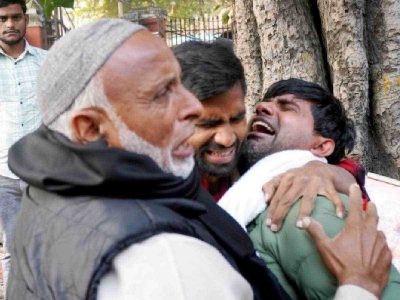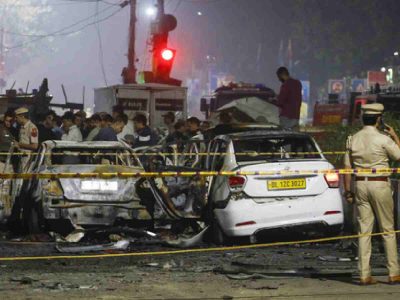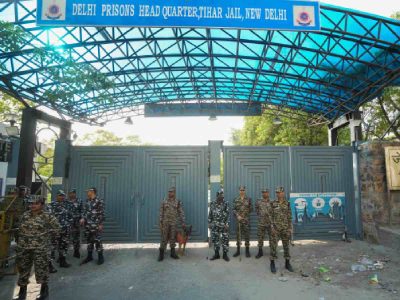Standing in a long queue waiting for her turn, Suman Devi was constantly feeding warm water to her 5-year-old son, who recently developed severe cough and cold.
“He developed cold around Dussehra last week. It soon turned into severe cough,” said the 30-year-old while waiting for her appointment with the doctor at the Mohalla Clinic in Nangloi, west Delhi.
The area we live in smells a lot because of the open drain. Dust pollution is also very high. My son falls sick every winter, she added.
The story of her son is not unique. The Nangloi industrial area — a hub of polymer and plastic industry — falls in one of the 13 air pollution hotspots of Delhi.
Dr Jagdish Mehta, in-charge of the Nangloi Mohalla Clinic, explains, “The pollution level in Nangloi is very high. That’s why we witness an increase in upper respiratory diseases every year in October end.
“This year we are seeing that cases of upper respiratory illness, which is usually caused by air pollution, have increased by 50%. This is expected to increase as the AQI levels become more severe, around 500 μg/m3,” said Mehta, a former pulmonologist.
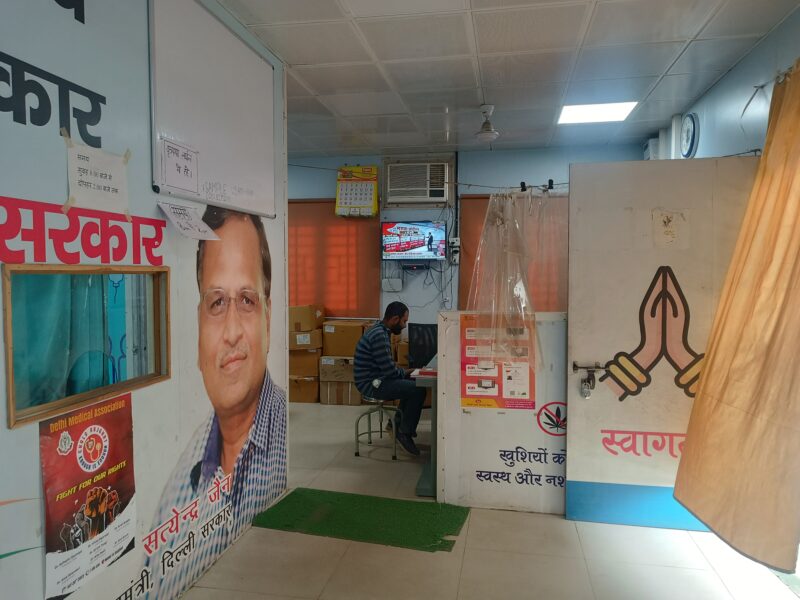
The situation is similar in Sultanpuri, in Delhi’s north-west region.
Dr Ramesh Bansal, at the Mohalla Clinic in the locality, says, “In my clinic, I am witnessing an increase in cases of respiratory disease by 70%. With Diwali round the corner, this number is likely to go up.”
The high pollution level will continue till the end of January. During these three months, cases of COPD, asthma and other respiratory diseases increase especially among children, says the senior pediatrician who has been observing the trend for the past few years.
We all breathe the same air, but people with underlying asthma, COPD and children with premature lungs and allergies are more susceptible to air pollution, added Bansal.
While announcing the Winter Action Plan in October first week, Delhi Chief Minister Arvind Kejriwal said that as part of the Graded Response Action Plan (GRAP) for the upcoming winter, the MCD has identified 13 major hotspots which are the biggest contributor to Delhi’s air pollution.
The 13 identified hotspots in Delhi include Narela, Bawana, Mundka, Wazirpur, Rohini, RK Puram, Okhla, Jahangirpuri, Anand Vihar, Vivek Vihar, Punjabi Bagh, Mayapuri and Dwarka.
Patriot visited other Mohalla Clinics in Okhla, RK Puram and Anand Vihar. Clinics in Okhla and RK Puram, both pollution hotspots, saw long queues of patients, especially children.
However, some Mohalla Clinics in Anand Vihar and Naraina village were shut.
“The clinic has shifted to the nearby Mata Rani Chowk. But there also, they don’t see patients,” said a resident of Naraina village.
These hotspots are the places where factors that cause pollution are particularly severe. There is heavy traffic, swollen by often badly maintained roads and old trucks and buses; huge landfill rubbish dumps which are sometimes set on fire; polluting industries just a few miles from the city; intensive construction which generates choking clouds of dust; and, seasonally, smoke from crop burning in fields from farmland in neighbouring states. All of these activities impact lungs of the most vulnerable.
According to a Greenpeace Southeast Asia analysis of IQAir data from a live Cost Estimator, PM2.5 air pollution claimed approximately 54,000 lives in India’s national capital in 2020.
While announcing the 15-point Winter Action plan, the Environment minister Gopal Rai stated that Municipal Corporation of Delhi (MCD) will have a separate winter action plan for every hotspot to monitor and deal with the local pollution sources. The idea was to have separate plans for different sources of air pollution.
These hotspots are identified depending upon the annual average of PM10 exceeding 100 μg/m3 and for PM2.5 more than 300 μg/m3. This is based on data of air quality monitoring stations established by Delhi Pollution Control Committee and are located nearby (within the radius of 2km).
However, the recent rise in AQI numbers cast a doubt on the efficacy of these action plans.
According to the Central Pollution Control Board (CPCB), Anand Vihar, one of the key hotspots, has been consistently registering AQI above 300, which falls in the very poor category.
The AQI levels for other hotspots like Mundka, RK Puram and Okhla are similar to Anand Vihar. The AQI levels in all the major hotspots is consistently above 300.
On October 21, Delhi’s worsening air quality prompted the Delhi government to activate the second phase of its action plan (GRAP) which happens when air quality slips into “very poor” category.
“The AQI level is likely to go up to 500 in the coming days, especially during Diwali. Long exposure to such severely polluted air could cause prolonged respiratory illness,” said Dr Bansal when asked about how it could impact the health of Delhiites. This is a national emergency and calls for immediate action from both the Union and Delhi government, he added.
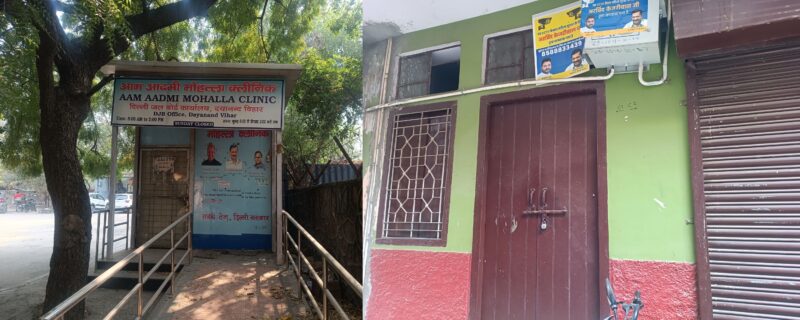
“This is the trend every year now. Delhi’s sky turns hazy every October. Authorities announce action plans, invoke GRAP and other measures. But nothing seems to be working. The AQI is already above 300. But, open burning of waste and dust from construction continues to pollute the lungs of Delhiites, especially children,” says Bhavreen Kandhari, an environmentalist and founding member of Warrior Moms — a collective of mothers from all over India fighting for children’s right to breathe clean air.
Patriot tried to contact MCD officials over the issue of open waste burning since they have issued zero challans this year in cases of open waste burning.
Patriot also reached out to Delhi Mayor Shelly Oberoi over the issue of open waste burning in Delhi, but did not receive any response.
Moreover, last week on October 23, environment minister Gopal Rai, announced names of eight new pollution hotspots. The new areas, which join the existing 13 hotspots, are Shadipur, ITO, Mandir Marg, Nehru Nagar, Patparganj, Sonia Vihar, Major Dhyan Chand National Stadium, and Moti Bagh.

